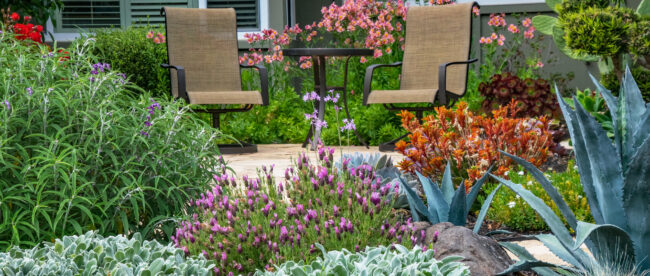Coping with Change
A look at one of our changemaking clients, Regional Water Authority
Cheryl Buckwalter has seen the change. The longtime Sacramento-area landscape designer and educator creates river-friendly landscapes with the future in mind, but her plant choices have had to evolve along with our weather patterns.
Our beloved Mediterranean climate is shifting towards Sonoran, the desert climate of Arizona and northern Mexico.
“It means that we and our gardens will be experiencing hotter temperatures and more extreme heat waves for longer periods of time,” she explains. “As we’ve already experienced, we can anticipate wetter rain events — and unusually less rain and snow events in the fall and winter months. It means that we need to be more diligent than ever to be objective when making plant choices. … Plan for worsening conditions. That’s the harsh reality.”
When planning landscape renovations, select plants that can withstand intense heat, drought conditions and dry summers, Buckwalter says.
In the “Sunset Western Garden Book,” consider Zones 12 and 13 instead of Sacramento regions’s typical Zones 9 and 14.
That doesn’t mean to adopt a desert aesthetic. Instead, help your landscape cope by preparing for extremes.
“Practice the watershed approach to landscapes, which is simply to use healthy soil-building techniques, climate-appropriate plants, rainwater as a resource, and efficient irrigation technology,” explains Buckwalter.
These principles are part of the backbone of river-friendly landscaping. Build soil health with organic mulch (leaves, chipped wood, etc.) and compost; that supports plant health and moisture retention, too. Keep any rainwater onsite instead of running off by creating “rain gardens” or swales. Then, grow plants that, once established, can thrive with little or no additional summer irrigation.
“Rocks used as mulch is not the answer,” Buckwalter says. “They absorb and give off heat. They do not benefit the soil or soil life. And, with excessive use, they can be just plain ugly.”
Can individual gardeners do anything to help cope with climate change?
“Reconnect with nature,” Buckwalter urges. “Embrace a new aesthetic. Become stewards of landscapes that go beyond sustainability and move into the realm of regeneration – landscapes that become better over time and provide numerous benefits to the environment and ecosystems.”
That starts with small steps. Plant trees and care for the ones you already have. Nurture your soil with compost and organic mulch. Plant native plants to support native wildlife. Help the bees; use plants with nectar-filled flowers to provide year-round food sources. Grow mostly low-water plants that need little if any extra irrigation.
“Become a climate-change champion,” Buckwalter adds. “Learn about the steps you can take to create biodiversity in your landscape. Get involved and give back. There are many ways to do this in your community and with organizations that need support. Find one that is the best match for you and your family, your schedule, your passion.”
Read the full publication here.

